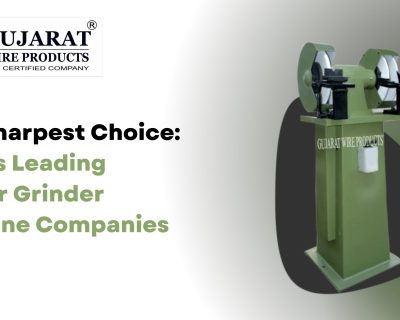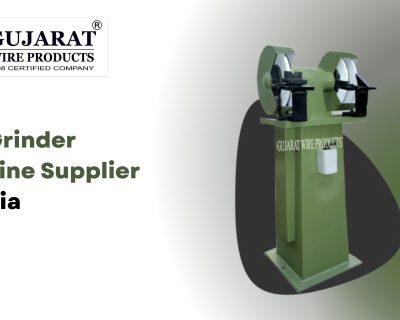Blog

Modern Manufacturing: Precision Engineering Grinding Tools
Introduction
Tooling choices have a long tail, especially in grinding. When wheels are selected on price alone, the downstream effects usually show up in shorter tool life, inconsistent finishes, and extra process adjustments nobody has time for. The industry may be expanding, but growth doesn’t change the fundamentals: a wheel still needs to hold tight tolerances and deliver stable surfaces. Yet buyers often zero in on diameter and grit while overlooking the real performance levers, abrasive type, bond chemistry, and wheel structure. Those are the factors that determine whether a wheel quietly supports production or keeps operators busy solving problems that shouldn’t exist in the first place.
This guide examines grinding tool categories by abrasive composition, applications where specific tools become essential, and selection criteria that separate cost-effective purchases from expensive mistakes.
Types of Precision Grinding Tools
Abrasive Material Categories
Aluminum oxide wheels handle high-tensile strength materials—carbon steel, alloy steel, and malleable iron. The tough abrasive resists fracture under grinding forces, maintaining cutting edges longer than softer alternatives. Silicon carbide suits low-tensile materials like cast iron, brass, aluminum, and copper. Its sharper, more brittle structure cuts through softer metals efficiently but chips when grinding hardened steel.
Zirconia alumina handles heavy-duty applications on stainless steel and high-nickel alloys. The self-sharpening characteristic exposes fresh cutting edges as grinding dulls surface grains, extending wheel life in demanding operations.
Bond Type Impact
Vitrified bonds dominate precision grinding because they’re rigid, porous, and heat-resistant. The glass-like matrix maintains wheel form during operation, enabling tight dimensional control. Resinoid bonds offer flexibility and shock resistance for high-speed operations. Rubber bonds produce excellent surface finishes for polishing and cut-off applications.
Key Applications
Automotive Component Production
Grinding produces camshafts, crankshafts, transmission gears, and bearing races requiring surface hardness and dimensional precision. The electric vehicle transition accelerates demand for precision-ground motor components and battery interconnects where tolerance stack-up affects performance.
Aerospace Manufacturing
Turbine blades, landing gear components, and engine parts demand grinding for final dimensions where tolerances affect safety. Aerospace specifications routinely require ±2.5 micron roundness and sub-micron surface finishes. Conventional machining can’t reach these targets without secondary grinding operations.
Medical Device Precision
Surgical instruments, implant components, and diagnostic equipment require biocompatible surface finishes. Grinding achieves 0.20-0.81 micron surface roughness critical for tissue-contacting parts. Rough surfaces promote bacterial adhesion and inflammatory responses—problems that compromise patient outcomes.
Tool and Die Production
Toolmakers grind cutting edges, reshape worn dies, and produce custom tooling. Mirror finishes on injection mold cavities and stamping dies come from precision grinding. A toolroom lacking grinding capacity can’t maintain production equipment or respond to design modifications requiring sub-0.001-inch tolerances.
Performance Advantages
Dimensional Accuracy
High-precision grinding maintains ±1.3 to ±13 micron diameter tolerances and ±0.25 to ±2.5 micron roundness specifications. This precision eliminates assembly problems from mismatched components. Parts meeting dimensional specs on first pass avoid costly rework iterations that delay production schedules.
Surface Finish Quality
Ground surfaces achieve 0.20-0.81 micron roughness compared to 1.6-3.2 microns from precision milling. Smoother surfaces reduce friction in moving assemblies—gears, bearings, and sliding components last longer when surface irregularities stay minimal. Lower friction means less heat generation and extended maintenance intervals.
Process Efficiency
Modern grinding tools integrated with CNC systems enable adaptive control, advanced sensor feedback, and process optimization software. Industry 4.0 connectivity allows real-time monitoring of grinding forces, wheel wear, and dimensional drift. Predictive maintenance prevents unexpected downtime by flagging tool replacement before quality degrades.
Selection Criteria
Matching Abrasive to Material
Use aluminum oxide for steel and ferrous metals requiring durability. Silicon carbide suits non-ferrous materials and ceramics where sharp cutting edges matter more than abrasive toughness. Zirconia alumina handles stainless steel and difficult-to-grind alloys.
Hard materials require soft-grade wheels—the grinding action fractures abrasive grains, exposing fresh cutting edges. Soft materials need hard-grade wheels that resist grain pullout during cutting.
Bond Selection Logic
Precision work demands vitrified bonds maintaining wheel form across production runs. High-speed operations benefit from resinoid bonds offering flexibility and impact resistance. Finishing applications use rubber or shellac bonds producing superior surface quality.
Wheel Geometry Considerations
Straight wheels suit surface grinding and cylindrical work. Cup wheels provide extra grinding surface for tool and cutter applications. Dish wheels access crevices and slots in complex geometries. Match wheel shape to workpiece geometry and grinding machine configuration.
Industry Trends
Automation Integration
The high-precision grinding machine market projects 6% annual growth reaching $8 billion by 2033, driven by automation adoption and Industry 4.0 integration. IoT-enabled machines provide data-driven process optimization and remote monitoring capabilities. Adaptive control systems adjust grinding parameters in real-time based on sensor feedback.
Sustainability Focus
Environmental regulations push manufacturers toward cleaner grinding processes. Water-based coolants replace oil-based alternatives. Energy-efficient grinding reduces power consumption per part. Longer wheel life through proper selection cuts abrasive waste.
FAQs
What tolerance levels can precision grinding tools achieve?
Modern precision grinding maintains ±1.3 to ±13 microns for diameter and ±0.25 to ±2.5 microns for roundness. Surface finishes range from 0.20 to 0.81 microns, suitable for applications requiring accuracy within ±0.0001 inches and 10 RMS surface quality.
How do I choose between aluminum oxide and silicon carbide wheels?
Aluminum oxide suits high-tensile materials like steel, stainless steel, and alloy metals due to its toughness. Silicon carbide handles low-tensile materials like cast iron, aluminum, brass, and copper where sharp cutting edges matter more than abrasive durability.
What bond type works best for precision applications?
Vitrified bonds excel in precision grinding because they maintain wheel form, resist heat, and provide consistent cutting action. The rigid, porous structure enables tight dimensional control across production runs while the heat resistance prevents bond degradation during extended grinding.
Can grinding tools handle hardened steel above 60 HRC?
Yes, but tool selection matters critically. Use aluminum oxide or CBN (cubic boron nitride) abrasives with appropriate bond chemistry. Harder materials require softer-grade wheels where grinding forces fracture dulled grains, exposing fresh cutting edges that maintain grinding effectiveness.
How does wheel grade affect grinding performance?
Wheel grade determines grain retention strength. Soft grades release grains easily, suitable for hard materials that dull abrasives quickly. Hard grades retain grains longer, ideal for soft materials where premature grain loss wastes abrasive. Matching grade to material maximizes wheel life and part quality.
Conclusion
Precision grinding tool selection determines your capability to serve demanding markets versus commodity production. Match abrasive type to material properties, verify bond chemistry suits your application, and confirm wheel geometry fits machine configuration. Request sample grinding trials with your actual specifications before large purchases.
Gujarat Wire Products has supported precision manufacturing operations since 1975, serving clients across India, Africa, Europe, and Asia. While grinding tools complement our core wire processing equipment, we understand the precision manufacturing ecosystem and maintain technical partnerships to support integrated production solutions.
Contact our technical team at gujaratwireproducts.com to discuss your precision manufacturing requirements and explore equipment options matched to your tolerance specifications and production volumes.



